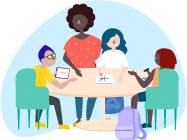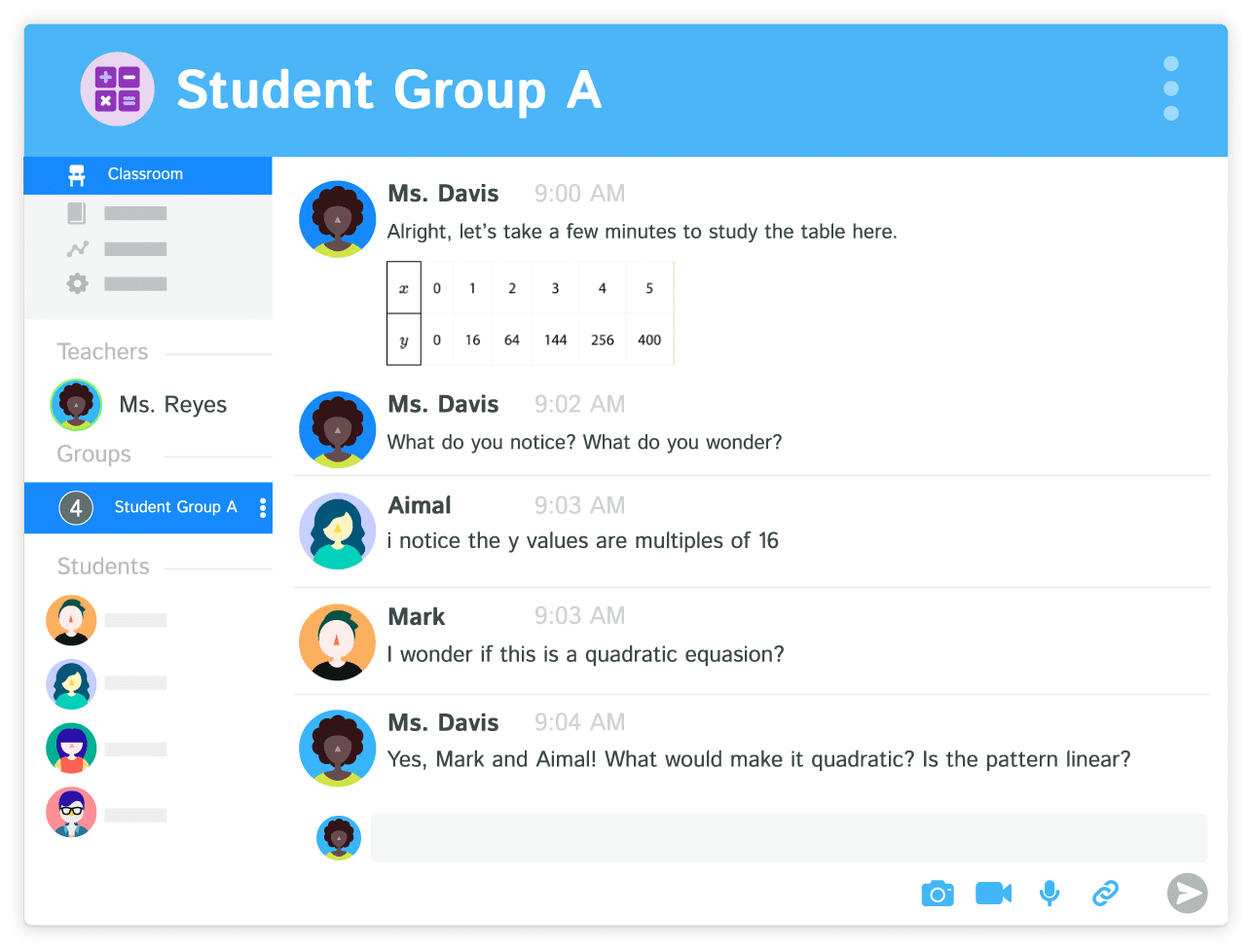

Ann Leghorn
Reading Specialist & Instructional Coach
Ann teaches reading skills to high school students and coaches teachers to embed literacy strategies into classrooms in New York City.
Instructional Coach Ann Leghorn walks us thought a variety of ways to bring curriculum into the digital world.
This has been the year of flexibility and adaptation for all schools. At my school, we are continuing to find ways to adapt to life in a remote classroom. As an instructional coach, I have leaned on the experiences of our teachers who had been tasked with quickly transitioning the curriculum last March to meet the emergency online environment.
Prior to the pandemic, our school did not have the access to provide 1:1 technology to students. We became worried at how students would work from home using unfamiliar technology during a pandemic. Collectively we have worked to adapt our existing curriculum to meet the demands of digital learning by slowing down the curriculum, varying our methods of teaching content, and incorporating more student choice.

Slowing It Down
One way in which we have learned to adapt our curriculum to the digital world is by slowing down. Online learning has pushed us to be more flexible in our pacing and to think about how we can extend units of study that are most important and of interest to students.
We have learned that more time must be spent guiding our students and providing comprehensive feedback, rather than just pushing through content because it’s on the map. Part of this had to do with the need to simultaneously teach how to engage with online learning and digital documents in conjunction with the content.
We worked during common planning time to determine key assignments, revise plans to provide more time for students to work on them, and incorporate more opportunities for revision.
In English classes, teachers opted to extend some novel units in order to give more time for reading, discussion, and reflection of the books that students found most interesting. We want students to be exposed to a variety of literature but also want it to take place in a way that students comprehend and is meaningful to them.
In addition, slowing down serves as an opportunity for social-emotional learning and growth to take place. As we extend some of our curriculum and place more emphasis on growth, we have deepened our connections with the students who are taking the time to reflect and revise their writing using teacher feedback.
Now, teachers can provide more intentional feedback and encourage more frequent revisions of assignments. While we must still plan with an eye on the potential state standardized tests looming at the end of the school year, we are adapting so that the curriculum happens with students and not to them.
Variety in Content Delivery
It is abundantly clear that the same methods used to deliver content in a typical in-person school day do not all translate to the online learning environment.
At a high school level, student discussion and interaction has been harder to achieve on a regular basis. It isn’t as easy as circulating the room to monitor student discussion, provide quick notes of feedback and encouragement, and ensure everyone is on task. Students are more hesitant to unmute and share or take public risks. Some students have never met their peers in person.
Using add-ons such as PearDeck, our teachers have begun to provide instruction in much smaller chunks with more frequent stops in which students can practice the new skill, respond to a higher order thinking question, or begin to make connections.
When submitting their responses nonverbally, such as through the interactive PowerPoint or in the chat, more students feel comfortable taking risks. They don’t have to raise their hand and attempt to answer with fear of embarrassment of getting it wrong in front of others. They can instead choose to submit responses directly to the teacher and receive immediate feedback.

Here’s a sneak preview of what you can do in Kiddom: plan lessons that include all sorts of interactive materials (slides, documents, assessments) for students to engage with.
Teachers can quickly show student responses anonymously to spark discussion and highlight exemplary work. While we still love to hear our students’ voices, the increased opportunities for immediate nonverbal submissions and feedback has expanded the options for student participation.
Some teachers have adopted a flipped classroom model to avoid the lecture style. Students learn some of the content via videos with embedded questions before they come to synchronous class. This allows students to spend more time applying that new knowledge while working on the hands-on portions of assignments through writing, discussions, or collaborative analysis. Our school’s new investment in technology and hotspots opened up the opportunity for flipped classrooms, something that wasn’t readily available before.
Teachers have also expanded use of leveled readings to grow student background knowledge prior to classes. This provides students with texts on their instructional reading level so that they are appropriately challenged but not overly frustrated when working independently.
It also gives students an opportunity to read at a level that is comfortable for them and ensures they can focus more on the content rather than struggling to comprehend. Expanding student background through video and leveled texts ensures they are better able to participate during class discussions or expand on their thoughts when writing.
Student Choice
The increased technology has allowed us to adapt to specific student learning styles. Ultimately, we can give students more choice in the matter. Many teachers have worked to provide students with options in the way they approach assignments. Do they want to watch it on video or use a step by step guide? Read silently and independently or use a read aloud feature? Draw their response or write it out?
Our teachers have worked to develop student choice boards when possible and given options for students to work independently, in a breakout room, or in a teacher-led small group. Increasing choice in the content turns ownership over to students and allows them to determine what fits well for themselves and their environment.
Teachers have used e-books, audiobooks, and graphic novels to allow students to access texts in a way that fits their needs. They may not be in a place where independent silent reading can happen easily, but headphones and an audiobook might be a better choice.
We have also begun to provide the option of a traditional novel or the graphic novel version when we can. This helps mitigate some of the comprehension barriers when students are required to read more outside of a guided classroom setting. We can still use class time to close-read sections of the original text but students can spend independent time reading with more understanding.

In Kiddom, teachers can communicate with students and groups in a way that encourages autonomous engagement with the learning material.
Adapting our curriculum to flow in the digital world has not always been easy. It has taken much trial and error, discussions across departments and grades, and sometimes left us scratching our heads.
Our teachers have spent hours retooling curriculum, trimming and extending, and building in more opportunities for revision. We have had to redefine what we see as “participation” in order to flexibly engage students outside of a typical dialogue.
Finally, we have used the technology to expand the amount of choice we offer to students in and out of the classroom. Our community continues to reflect on our successes and struggles, and look for opportunities. We have learned many lessons thus far in the school year and will continue to look for ways to adapt and change to this new way of learning.
Kiddom seamlessly connects the most critical aspects of teaching and learning on one platform.
For the first time, educators can share and manage digital curriculum, differentiate instruction, and assess student work in one place. Learners can take assessments online, see student performance data with the click of a button, and teachers have the insight and tools they need to create individual learning paths.
Ready to bring digital curriculum to your school or district?
Connect with us in a 15-minute meeting to learn more about available pre-packaged curriculum, and how the Kiddom education platform can support your learning community.